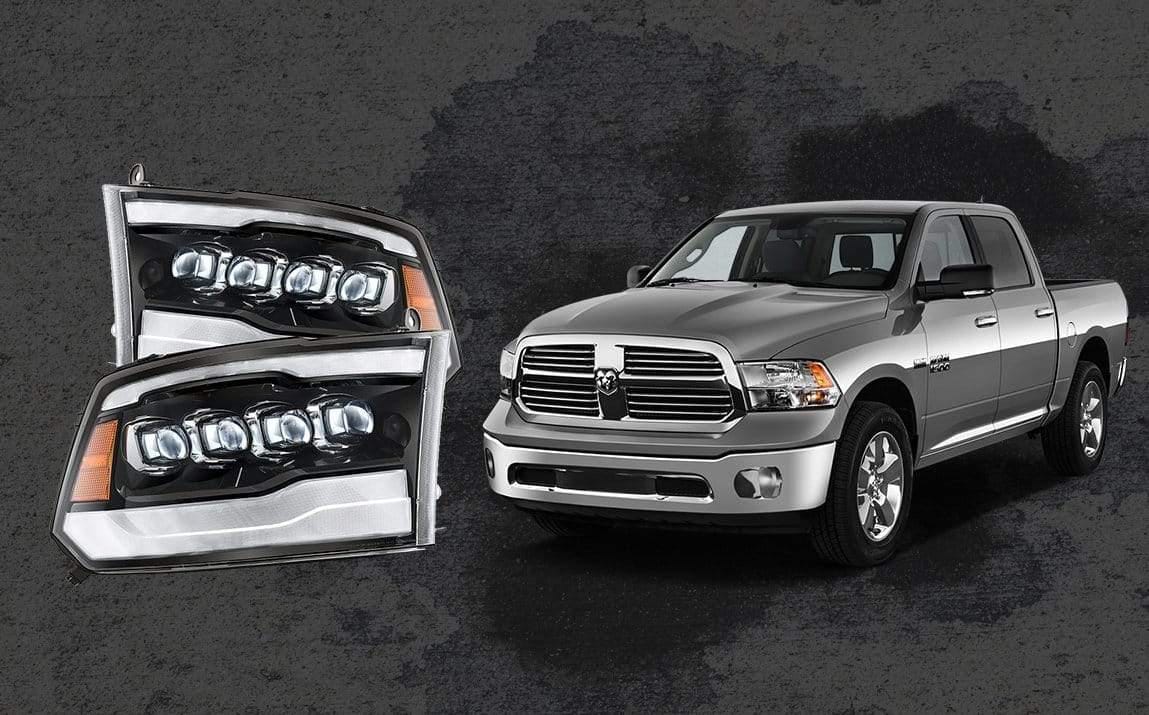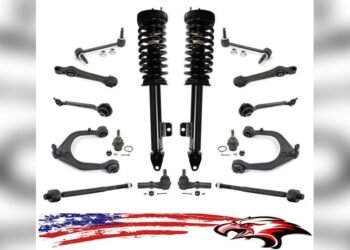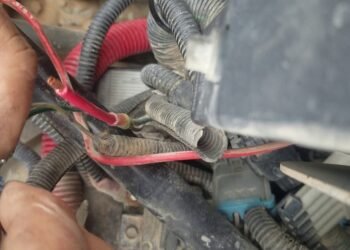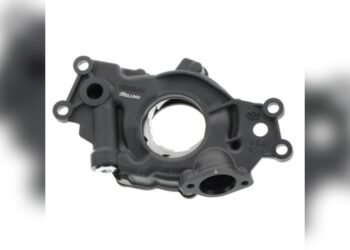Are your Dodge Ram headlights acting up when you need them the most? Whether one headlight flickers or both suddenly go dark, these issues can put a serious damper on your driving safety and confidence.
You rely on your Ram to power through every journey, but headlight problems can leave you stranded or struggling to see clearly at night. The good news is, most Dodge Ram headlight troubles have straightforward causes and fixes. You’ll discover the common reasons behind these problems and simple steps you can take to diagnose and solve them quickly.
Keep reading to ensure your headlights shine bright and keep you safe on the road.
Common Bulb Issues
Common bulb problems often cause Dodge Ram headlight issues. These problems can make your headlights dim, flicker, or stop working. Many drivers face these troubles but do not realize the cause. Understanding bulb issues helps keep your headlights bright and safe on the road.
Bulbs may fail for different reasons. Some problems are simple to fix, while others need more care. Knowing what to check first saves time and money.
Burnt Out Bulbs
Burnt out bulbs are the most common reason for headlight failure. A bulb burns out when the filament inside breaks. This stops the light from shining. Usually, burnt out bulbs happen after long use.
Check your headlights if one side is dark or flickering. Replacing the burnt out bulb is easy and restores your light instantly. Always keep spare bulbs in your vehicle.
Incorrect Bulb Types
Using the wrong bulb type can cause problems. Each Dodge Ram model needs specific bulbs. Incorrect bulbs may not fit properly or work well. They can also overheat or damage the headlight housing.
Always use bulbs that match your truck’s specifications. Check the owner’s manual or ask a trusted parts store for the right type. Proper bulbs ensure good light and long life.
Handling And Installation Tips
Handle bulbs with care to avoid damage. Do not touch the glass part with bare hands. Oils from your skin can cause the bulb to burn out faster.
Wear gloves or use a clean cloth when installing bulbs. Make sure the bulb is seated firmly and connected properly. Loose bulbs can flicker or fail quickly.
Clean the bulb socket before installation. Dirt or corrosion can block the power and cause flickering. Proper installation helps your headlights shine bright and last longer.
Fuse And Relay Problems
Fuse and relay problems often cause Dodge Ram headlight failures. These components control power flow to your headlights. A blown fuse or faulty relay stops the lights from turning on. Understanding how to locate and test these parts can save time and money. Many headlight issues trace back to these simple electrical parts.
Locating Headlight Fuses
Start by finding the fuse box in your Dodge Ram. It is usually under the dashboard or in the engine compartment. Check your owner’s manual for the exact location. Inside the fuse box, look for the diagram showing fuse assignments. The headlight fuse is often labeled as “HEADLAMP” or “HDLP.”
Testing And Replacing Fuses
Remove the fuse using a fuse puller or needle-nose pliers. Inspect the metal strip inside the fuse. A broken or burned strip means the fuse is blown. Use a multimeter set to continuity mode to test the fuse. Replace a blown fuse with one of the same amperage rating. Never use a fuse with a higher rating, as it can cause damage.
Identifying Faulty Relays
Relays control the power sent to your headlights. They act like switches using a small current to control a larger one. Locate the relay box near the fuse box. The headlight relay will be labeled. Listen for a clicking sound when turning the headlights on. No click may indicate a bad relay. Swapping the relay with a similar one can help confirm this.
Relay Swap Method
Find another relay in the box with the same part number. Common relays include those for the horn or fuel pump. Swap the headlight relay with the known good relay. Turn on the headlights to check if they work. If the lights turn on, replace the faulty relay. Return the swapped relay to its original slot to avoid other issues.
Electrical Wiring Concerns
Electrical wiring problems often cause Dodge Ram headlight issues. Faulty wiring can stop power from reaching the headlights. This leads to dim lights or no light at all. Checking wiring helps find hidden problems early. Proper inspection keeps headlights working and ensures safety on the road.
Checking For Power At Sockets
Start by testing power at the headlight sockets. Use a multimeter to check voltage. No power means a wiring or fuse issue. Make sure the test leads touch the correct terminals. Power at the socket confirms the wiring to that point is good. This step narrows down where the problem lies.
Inspecting Wiring Damage
Look closely at wires running to the headlights. Check for cuts, cracks, or frayed areas. Damaged wires can cause shorts or open circuits. Move wires gently to spot hidden breaks. Fix damaged sections with proper connectors or replacements. Good wiring prevents unexpected light failure.
Corrosion And Connector Issues
Corrosion can block electrical flow in connectors. Inspect connectors for rust or green buildup. Clean corrosion with electrical contact cleaner and a soft brush. Ensure connectors fit tightly and hold firmly. Loose or corroded connectors cause flickering or no light. Keeping connectors clean ensures stable headlight performance.

Credit: undergroundlighting.com
Switch And Control Module Faults
Switch and control module faults often cause Dodge Ram headlight problems. These faults disrupt the electrical signals that control headlight functions. Drivers may notice flickering lights, headlights not turning on, or inconsistent lighting behavior. Understanding these issues helps pinpoint the exact cause and fix it efficiently.
Modern Dodge Rams use smart control modules to manage headlights. The headlight switch, Total Integrated Power Module (TIPM), and Integrated Power Module (IPM) play key roles. Failures in any of these parts can lead to headlight malfunctions. Testing and diagnosing each component is essential for a proper repair.
Testing Headlight Switch
Begin by checking the headlight switch. Use a multimeter to test electrical continuity. Turn the switch on and off, measuring voltage output at each position. No voltage or irregular readings indicate a faulty switch. Replace the switch if tests fail. Always disconnect the battery before removing the switch to avoid electrical shorts.
Troubleshooting Tipm And Ipm
The TIPM and IPM control power distribution to headlights. These modules can fail due to water damage or electrical shorts. Check for blown fuses inside the modules first. Use a scan tool to read fault codes from the TIPM/IPM. Replace the module only after confirming it is the cause. Resetting the module might temporarily fix some issues but does not solve the root problem.
Diagnosing Control Module Failures
Control module failures cause erratic headlight behavior. Use a diagnostic scanner to detect error codes linked to lighting systems. Inspect wiring harnesses for corrosion or loose connections. Repair damaged wiring before replacing modules. Professional help might be needed for complex control module repairs. Proper diagnosis avoids unnecessary part replacements and saves money.
Led Headlight Specific Issues
LED headlights bring brighter light and better energy efficiency to Dodge Ram trucks. Yet, these modern lights can face specific problems. Understanding common LED issues helps keep your headlights working well. This section explains typical LED failures, wiring challenges, and simple fixes.
Common Led Failures
LED headlights can fail due to several reasons. One common issue is flickering lights, often caused by poor electrical connections. Another problem is complete LED burnout, which happens when the LED chips wear out. Heat buildup inside the headlight housing may damage the LEDs over time. Moisture or water leaks can also cause LED failure by shorting the circuits. Knowing these failures helps in spotting problems early.
Compatibility And Wiring Challenges
LED headlights sometimes face compatibility issues with the Dodge Ram’s electrical system. The truck’s wiring and control modules may not support all LED types. Incorrect wiring can cause flickering, dim lights, or error messages on the dashboard. Some LED bulbs require specific resistors or adapters to work properly. Faulty or loose connections in the wiring harness can also create power interruptions. Careful wiring checks improve LED headlight performance.
Simple Fixes For Led Problems
Many LED headlight problems have easy solutions. Tightening loose connectors often stops flickering. Installing load resistors can fix error codes and stabilize the lights. Replacing damaged wiring or connectors restores proper power flow. Cleaning the headlight housing seals prevents moisture build-up. Using the right LED bulbs designed for Dodge Ram ensures compatibility. These steps help keep LED headlights bright and reliable.

Credit: undergroundlighting.com
Maintenance Tips For Longevity
Maintaining your Dodge Ram headlights ensures they last longer and work effectively. Regular care prevents common problems like dimming or flickering. Simple maintenance keeps your headlights bright and reliable for safe driving.
Regular Bulb Cleaning
Clean headlight bulbs often to remove dirt and grime. Use a soft cloth and gentle cleaner. Avoid harsh chemicals that can damage the bulb surface. Clean bulbs improve light output and visibility. Always clean bulbs when they are cool to avoid burns.
Protecting Electrical Contacts
Check electrical contacts regularly for corrosion or dirt. Clean contacts with electrical contact cleaner and a small brush. Corroded contacts reduce power flow and cause flickering. Apply dielectric grease to protect contacts from moisture and rust. Secure connections tightly to prevent loose wiring issues.
Preventing Moisture Build-up
Moisture inside headlight housing can cause fogging and damage bulbs. Inspect seals around headlights to ensure they are intact. Replace damaged seals promptly to keep moisture out. Use silica gel packs inside the housing to absorb excess moisture. Park your Dodge Ram in a dry place to minimize moisture problems.

Credit: www.youtube.com
Frequently Asked Questions
What Is The Most Common Reason For A Headlight Failure?
The most common reason for headlight failure is a burned-out or damaged bulb. Other causes include blown fuses, faulty relays, and corroded connectors. Regularly inspecting bulbs, fuses, and wiring helps prevent and quickly fix headlight issues.
What Is The Most Common Problem With The Dodge Ram 1500?
The most common problem with the Dodge Ram 1500 is electrical issues, especially headlight failures caused by faulty bulbs, fuses, or relays.
How To Troubleshoot Headlight Problems?
Check bulbs for damage or burnout. Test fuses and relays with a multimeter or swap them. Inspect wiring for damage or loose connections. Clean corroded sockets. Replace faulty parts promptly to restore headlight function.
What Are The Symptoms Of A Bad Headlight Relay?
Symptoms of a bad headlight relay include headlights flickering, not turning on, or turning off unexpectedly. You may also hear clicking sounds from the relay.
What Causes Dodge Ram Headlight Failures Most Often?
Burned-out bulbs, blown fuses, bad relays, and corroded connectors cause most headlight failures.
Conclusion
Dodge Ram headlight problems often stem from simple issues like burnt bulbs or blown fuses. Checking these parts first can save time and money. Cleaning corroded sockets and inspecting wiring also helps keep headlights working well. Regular maintenance prevents sudden failures on the road.
Taking quick action ensures safer driving, especially at night. Keep your Dodge Ram’s headlights bright and reliable for every trip.
















